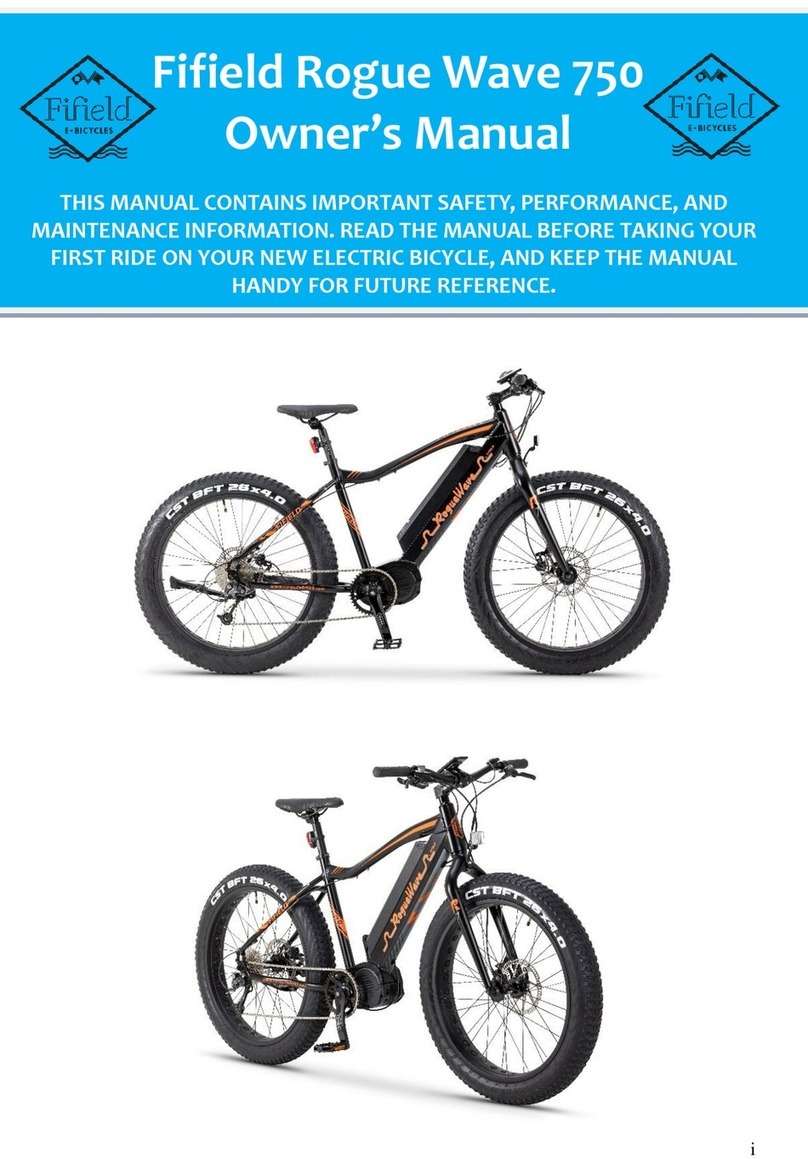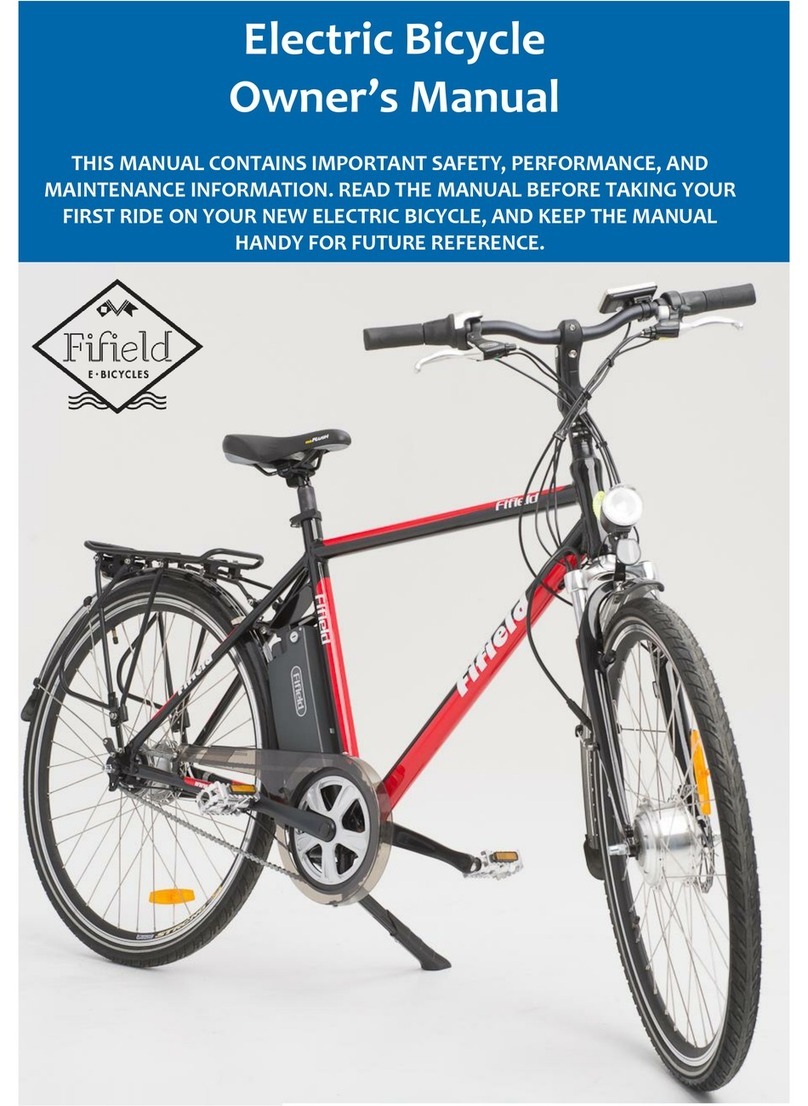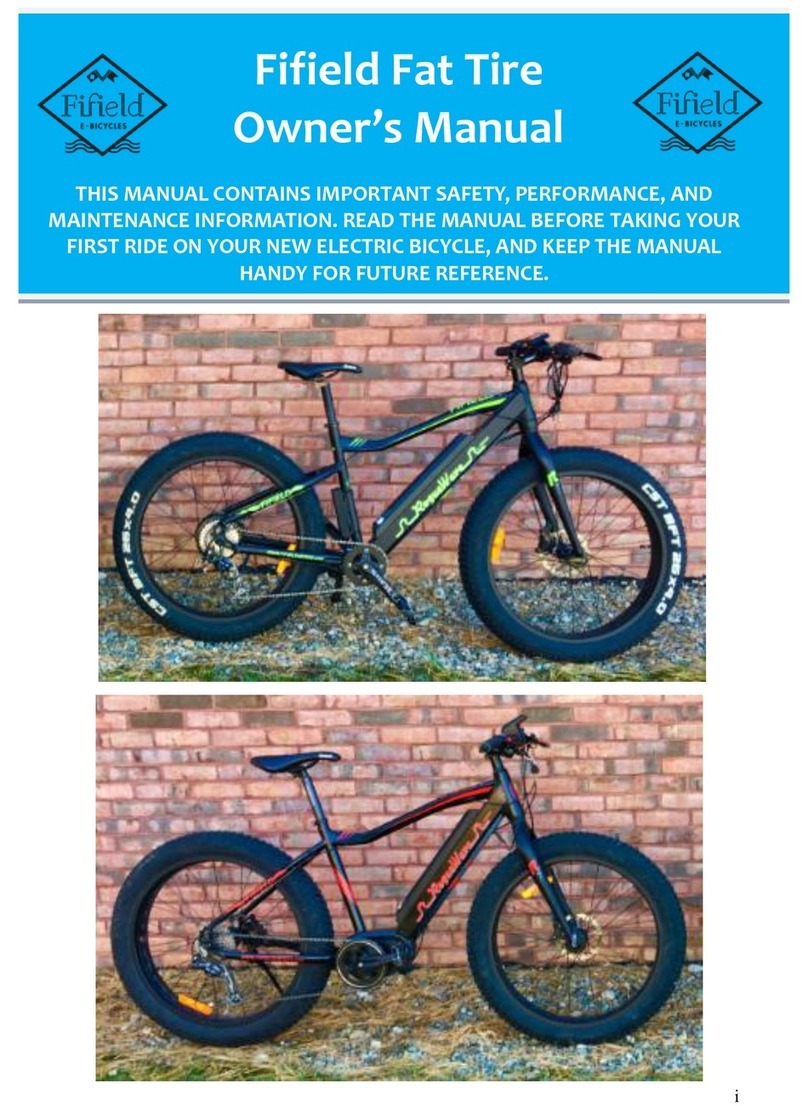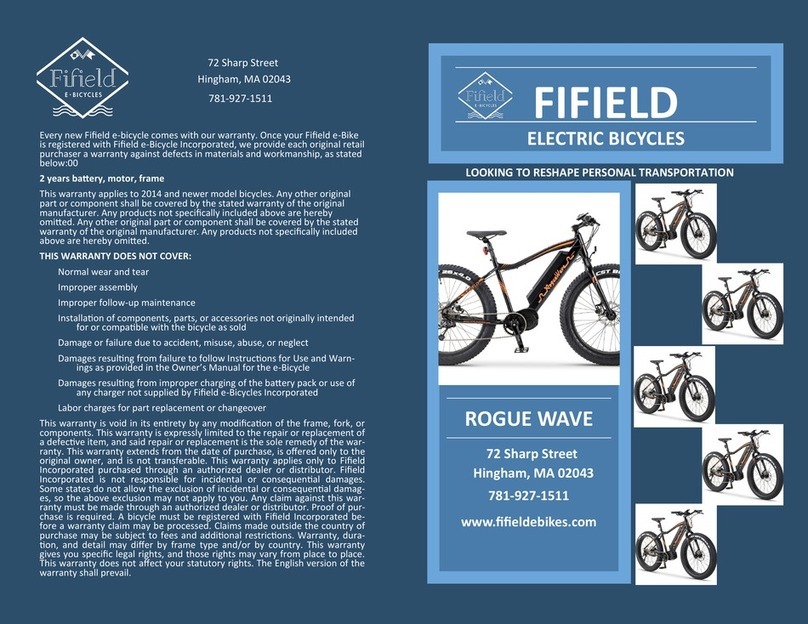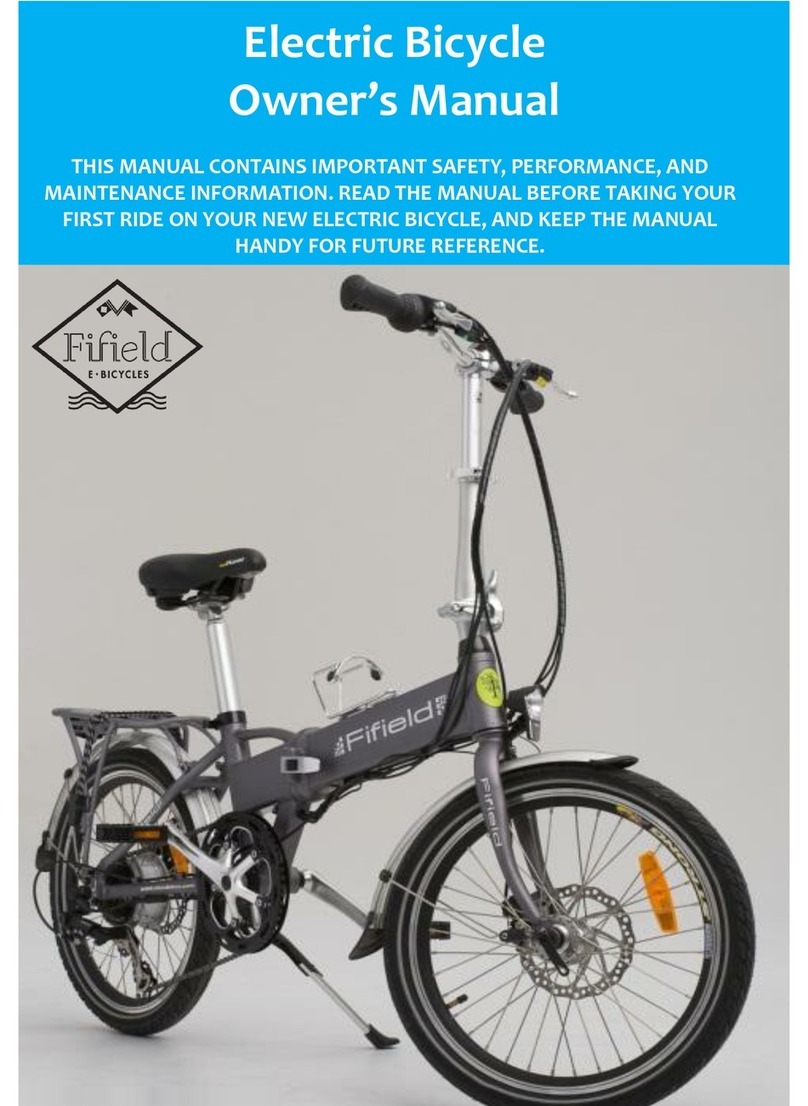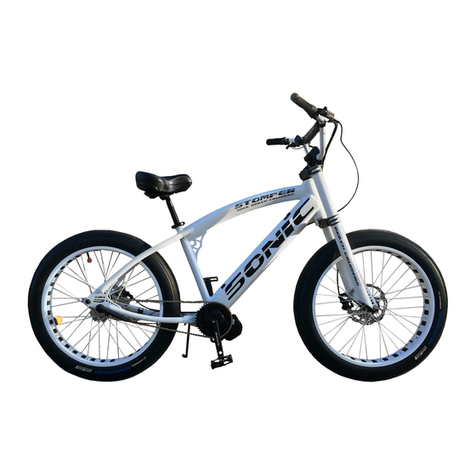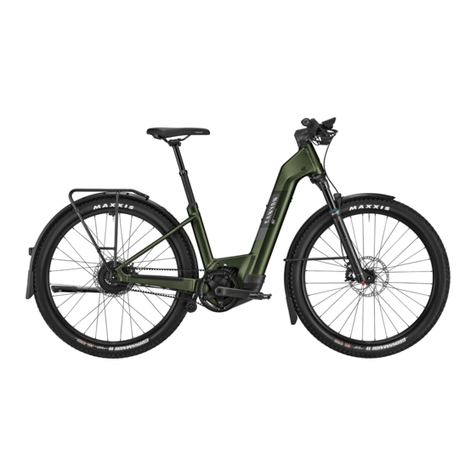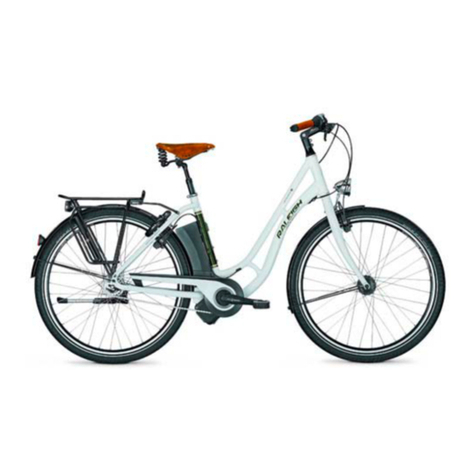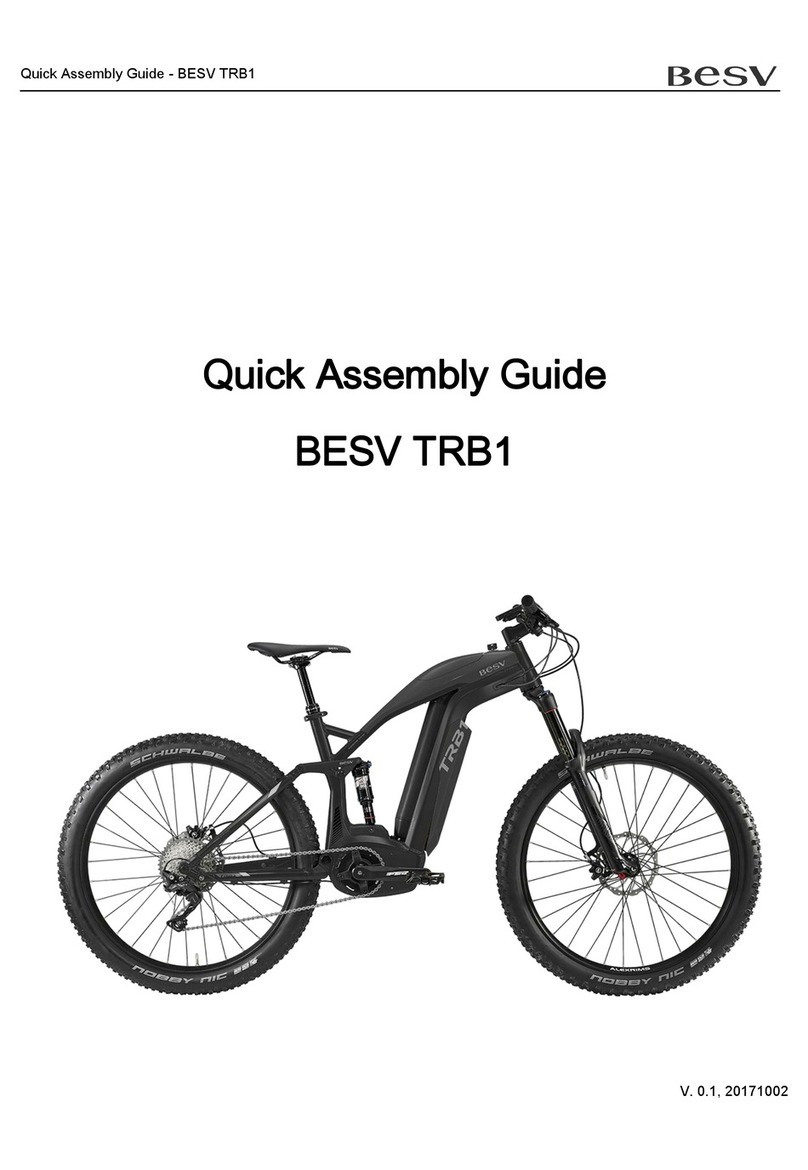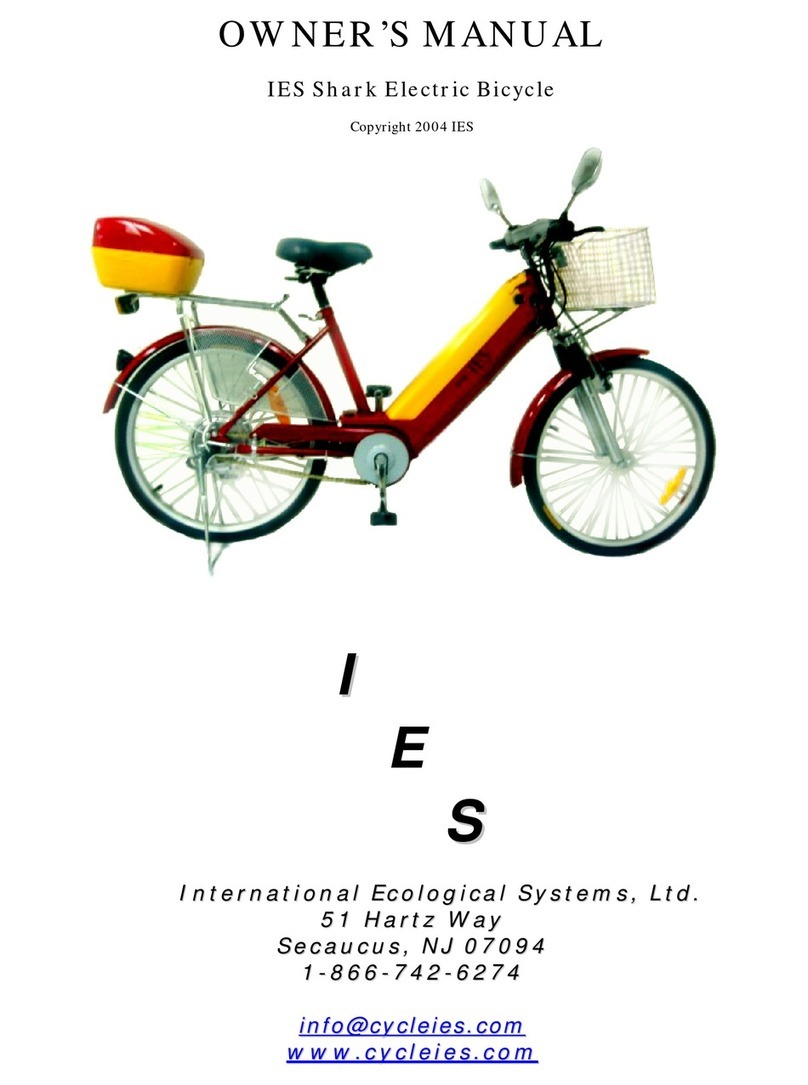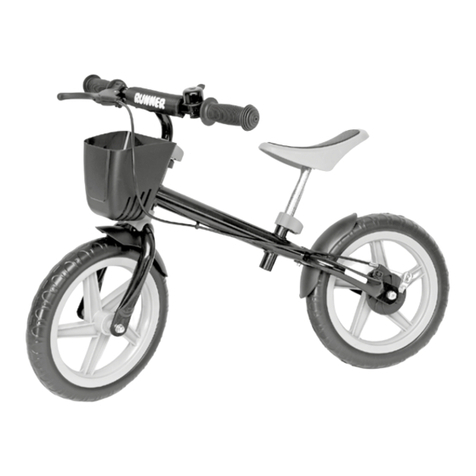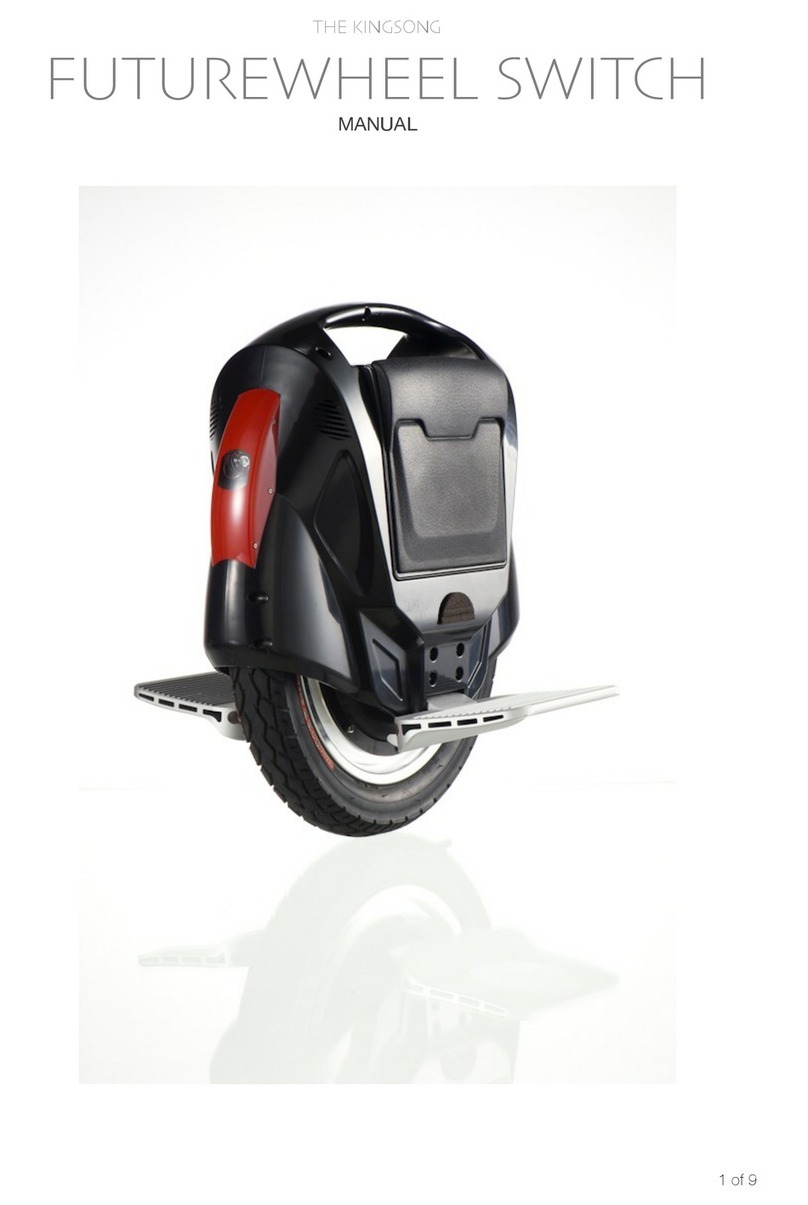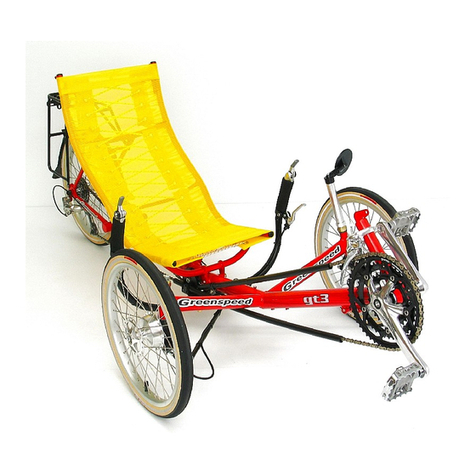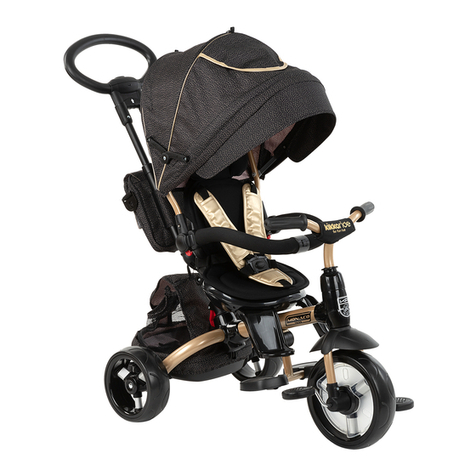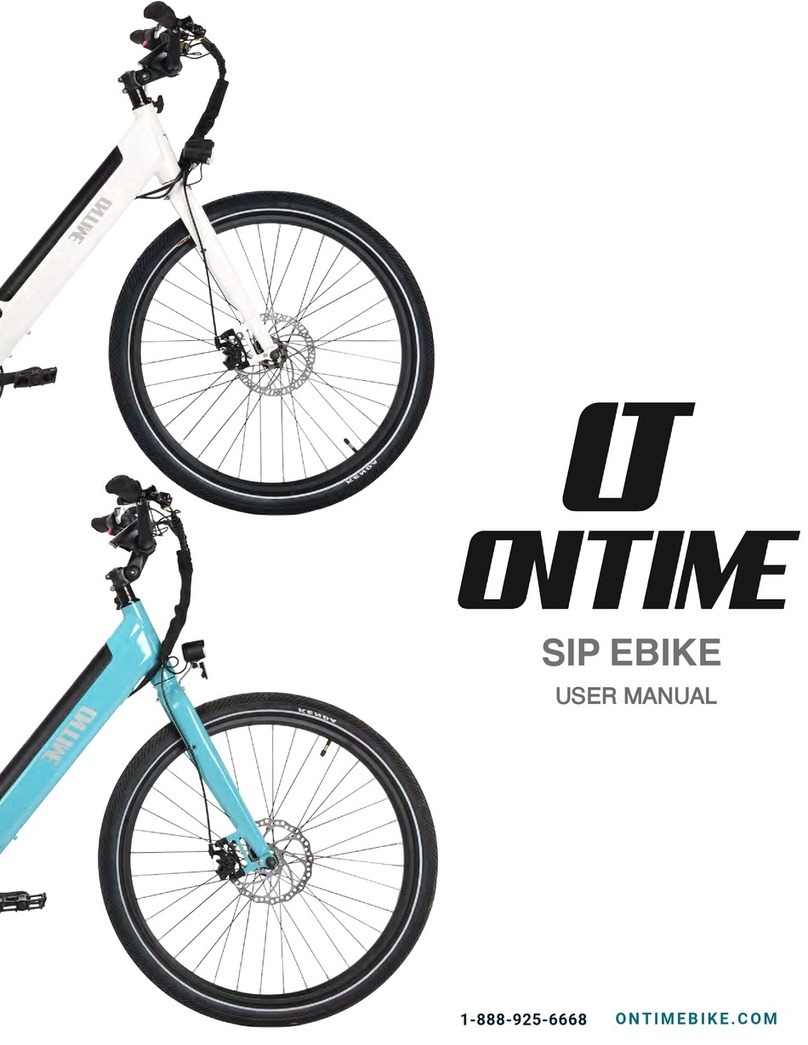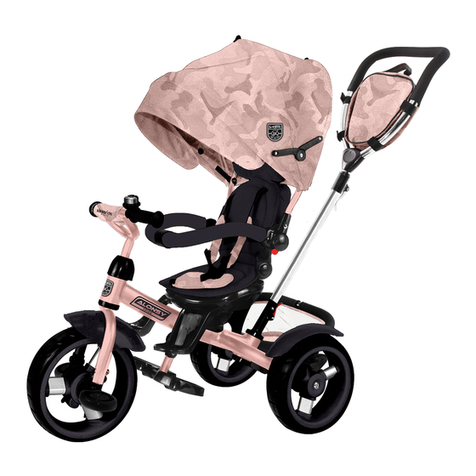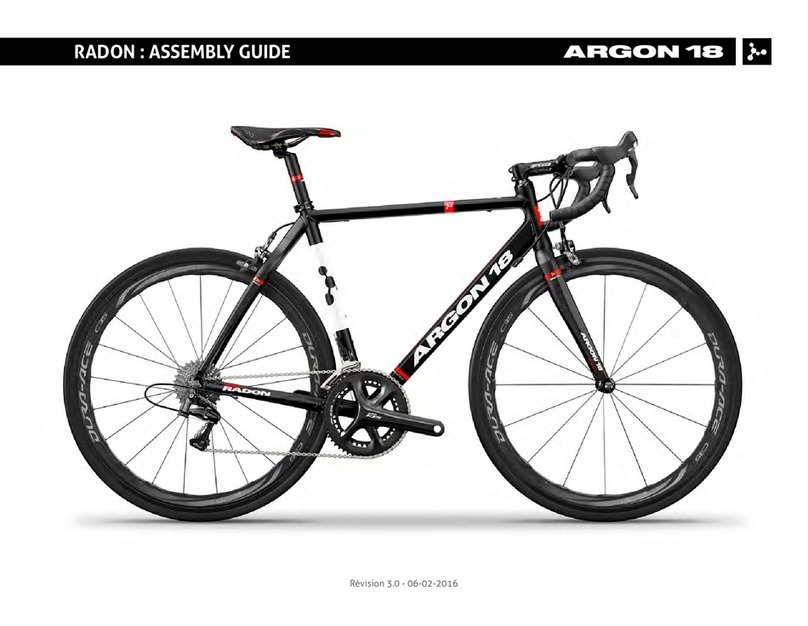FiField Premiere series User manual

IMPORTANT: KEEP FOR FUTURE REFERENCE
i
Electric Bicycle
Owner’s Manual
THIS MANUAL CONTAINS IMPORTANT SAFETY, PERFORMANCE, AND
MAINTENANCE INFORMATION. READ THE MANUAL BEFORE TAKING YOUR
FIRST RIDE ON YOUR NEW ELECTRIC BICYCLE, AND KEEP THE MANUAL
HANDY FOR FUTURE REFERENCE.

IMPORTANT: KEEP FOR FUTURE REFERENCE
ii
About this Owner’s Manual
It is important for you to
understand your new electric
bicycle (e-bike). Even if you have
ridden an e-bike before, it is
important for every person to read
this manual before riding –you’ll
know how to get better
performance, comfort, and
enjoyment from your new e-bike!
0
Please take the time to read this
manual while the battery is being
charged. It is the Owner’s
responsibility to carefully read all
of the contents of this manual and
to comply with all laws pertaining
to the operation of bicycles and/or
electric bicycles in your local
jurisdiction.
If the owner is unable to fully
understand this information please
contact Fifield Incorporated
directly for further explanation.
Register your Electric Bicycle
Due to recent federal legislation
an electric bike is no longer
classified as a motor vehicle.
However, various states have
differing laws about riding them on
the road. These regulations may
include but are not limited to being
at least 16 years of age and/or
having a valid drivers’ license. If
you have any questions regarding
your states legislation please
consult with the Laws web page or
consult your local department of
motor vehicles for clarification.
If you have further questions
about the operation of this e-bike,
consult your authorized dealer or
contact Fifield directly. It is
extremely important that you
follow the safety guidelines
contained in this manual in order
to ensure your maximum safety. If
you loan your bike to anyone make
sure they have also read and fully
understand this owner’s manual.
WARNING
Don't dismantle and repair parts
by yourself, please go to the
local distributor or the servicing
station if necessary.
CAUTION
Before riding your e-bike, you will
need to charge your battery fully
before using. Failure to do so
may damage the battery life and
performance.

IMPORTANT: KEEP FOR FUTURE REFERENCE
iii
My bicycle model: _____________________________________________
My dealer and #: _______________________________________________
Date of purchase: ______________________________________________
Contact Fifield
72 Sharp Street, Hingham, MA 02043
Along with registering online, for your own benefit, please also enter
information about your bicycle below.
Welcome to the Fifield e-Bike family!
Keep for your records

TABLE OF CONTENTS
iv
Before your first ride Pg. 1 - 4
Congratulations!
Know your electric bicycle
Check before riding
Taking off
Safe riding Pg. 5 - 6
Local riding laws
Safety precautions
Varying riding conditions
Assembly Pg. 7
Description
Registration
Instructions for Use Pg. 8 - 13
Switching ON/OFF
LCD display screen
Pedal assist
Throttle
Gears
Proper battery usage
Charging the battery
Maintenance Pg. 14 - 16
Wheels
Gears
Throttle
Rims
Spokes
Tires
Handlebars
Brakes
General maintenance
Warranty Pg. 17
Fifield Limited Warranty

1
Congratulations!
You are now the proud owner of a
Fifield Electric Bicycle!
Your electric bicycle is like any
other bike, but with electric pedal
assistance and throttle. The same
precautionary steps while biking
should be taken to prevent any
accidents or injuries.
“Electric” means that your
e-bike will assist you when you are
pedaling if you so choose. You may
also pedal normally with no
assistance at all or twist the
throttle to get moving with no
pedaling necessary.
The electric bicycles’ amount
of assistance will depend on what
level you set it to; the speed varies
from 0 to 5. The fastest speed this
bicycle travels is 20 MPH (32 Km/h).
Know your electric bicycle
If misused the features of your
electric bicycle may cause you to
lose control of the e-bike. Before
riding in fast or more difficult
situations, learn the function and
performance of all the mechanisms
of your bike by riding at slower
speeds in a flat, empty space.
The maximum weight is 286lbs
(130 kg). When riding, please pay
attention to the weather and load
on your bike; if any changes are
noticed adjust your riding style
accordingly. When it is raining or
snowing, please increase braking
distance as a safety precaution.
This e-bike is not afraid of rain
or snow, but it cannot be
submerged in water. When water
submerges the motor it can cause
a short circuit to occur and
damage the electric apparatus.
CAUTION
Charge your battery fully before
using.

2

3
Check your e-bike before riding
everytime
Before operating your electric
bicycle, inspect it carefully to avoid
accidents or damage. Inspect your
bike completely before each ride.
Turning the power on and then
accidentally twisting the throttle
can result in the e-bike lurching
forward and may cause an
accident, damage, or injury.
If the battery was removed,
place the battery back into its
location and be sure to lock it and
remove key. Check to see that the
battery is fully charged (battery
level indicated on screen) before
riding and check the air pressure of
the tires (45 –50 psi). Be sure to
test the front and back brakes, as
well as the condition of the
handlebars and the front and back
wheels.
Make sure that everything is
fastened and secure. Be sure to
check that all quick releases are
locked and in good working order.
Taking off
As the bike starts, accelerate
slowly; do not try to get to your
maximum speed right away
because doing so could damage
the electric components.
If applied, the hand brake will
automatically cut the power to the
motor as well as release the
throttle. You should avoid using
the throttle while brakes are
being applied so that you do not
overload the motor. When starting
from an elevated path, pedal as
much as possible so that the
electric power will last longer.
Pedaling more than using solely
the throttle will lenghten the life of
the battery and motor.
Going downhill
When going downhill, please
do not turn the power off. If you
are not pedaling or using the
throttle, there will be no power
assist when traveling downhill. If
you turn the power off, it could
easily damage the controller and
motor.
CAUTION
Always keep the power switched
OFF before riding. Turn on only
after you are ready to ride.
WARNING
Do not leave the key in the
battery lock while riding to avoid
breaking the key.

4
As you continue to ride, the
battery will decrease
porportionally based on the
amount of power you are using. As
the battery decreases, the bar will
go down one by one. If the bar
goes out completely, you can still
pedal your e-bike just like a regular
bike. Be sure to charge your
battery when you get to an
electrical outlet.
To get the best distance out of
your electric bike, refrain from
excessive stop and go braking and
coast as much as possible.

SAFE RIDING
5
Local riding laws
Most state and local areas
have specific laws for cyclists.
Please check with your local
Department of Motor Vehicles for
clarification. Again, these e-bikes
are not considered motor vehicles,
but may be subject to additional
regulation based on the state you
live in. Some of the common laws
include mandatory lights and
reflectors on the bikes.
Safety precautions
Be sure to ride an appropriate
distance away from cars,
pedestrians, and other obstacles.
In addition, try to avoid potholes,
drain grates, and other
imperfections in the road which
may affect your ability to ride. A
bell is provided to alert others of
your approach.
OBEY all traffic laws relevant to
the operation of bicycles and
electric bicycles.
KEEP both hands on the
handlebars at all times and do not
hang objects from the handlebars.
RIDE predictably and in a straight
line. Never ride against traffic.
USE the correct hand signals when
turning or stopping. If you do not
know the proper hand signals, it is
important you learn them before
riding on the road.
USE extreme caution when you are
near other vehicles. Ride
defensively and assume that other
people on the road do not see you,
and be careful at intersections
when starting from a stopped
position.
DO NOT suddenly brake in the rain
or on slippery surfaces.
WEAR a helmet for your protection
and bright or reflective clothing to
make you more visible.
DO NOT wear lose clothing
because it can get caught in the
bicycle.
When going over train tracks, be
sure to ride perpendicular to the
tracks or walk your bicycle across.

6
Varying riding conditions
Wet conditions
Like any other moving object,
when it is wet or snowing, there is
less traction. This applies
specifically to the brakes on the
bike; they will not perform as well
as they do in dry climates. Be sure
to brake earlier because it will take
a longer distance to come to a full
stop. Ride at a slower speed and
try to be more visible.
Low visibility
Even though your bicycle
comes with headlights, rear lights,
and reflectors, in situations where
there is low lighting it may make it
difficult for people to see you. Be
sure to see and be seen in your
environment. Wear reflective and
bright colored clothing to enhance
visibility for others.

ASSEMBLY
7
When your Electric Bike is shipped, the handlebars will not be
attached and the front wheel will be off.
WE DO NOT RECOMMEND YOU ATTEMPT THIS ASSEMBLY
YOURSELF. If assembly is done improperly you may damage the
brakes, frame, and structural integrity of the bike. Please bring the
bike to your closest local bike shop and allow a trained professional
to assemble the bike for you.
Quick Release:
The quick release lever is located on the bikes hub, and it enables the
easy installation and removal of the bikes wheel. For an in depth
instruction of how to use the quick release lever, visit our website (In the
“When Your New E-Bike Arrives” section).
Registration:
When assembly is complete, please refer to our website to register your
new electric bicycle! On the site, you will be prompted to answer a few
brief questions and provide two serial numbers. The frame serial number
is located directly below the handlebars and above the front wheel on
the front of the bike. The motor serial number is located on the motor
which sits directly in the center of the front wheel.

INSTRUCTIONS FOR USE
8
Switching ON/OFF
Make sure your battery is secure and locked in place. Remove the key
from the battery and switch it to ON. Underneath the handlebars there
are three buttons; MODE, UP, and DOWN. To turn the device on, press
and hold MODE for two seconds. To turn off, hold MODE for an
additional 2 seconds. Be sure to turn the power switch on the battery to
OFF when not in use.
When the e-bike is parked for more than 10 minutes, the display will
automatically shut down.
LCD display screen
The display screen will only work when the battery is attached to the
bike.

9
LCD Function Summary
The LCD screen provides a
wide range of functions and
indicators to the fit your needs.
The indicated contents are as
follows:
Battery level indicator
Speed display
Trip distance and total distance
Cruise control (when walking)
Motor power (wattage)
Speed display
Trip distance and total distance
The LCD has three buttons.
MODE UP DOWN
Display Interface
After starting up the display,
the default setting will show the
odometer. However, you are also
able to measure the distance of a
single trip by pressing MODE once.
In addition, the default screen will
display your current speed but you
are also able to view average
speed and max speed by pressing
the UP button once.
Push Cruise Control
Press and hold DOWN to
enable power assist while walking
the bicycle. Your bike will go at a
speed of 3.7 MPH (6 KmPH).
NOTE: This function can only be
used while pushing/walking the
electric bike by hand. Please do not
use this function while riding.
Power Assist Level Selection
Press UP or DOWN to change
desired output of power. The
power ranges from 0-5. Level 0 will
supply no power to the pedal
assist and level 5 will supply the
maximum. The default value is
level 1 though you will be able to
shift freely at any time.
CAUTION
Try to avoid hitting the screen.
Do not try to modify the system
parameters as it may cause
malfunctions.
WARNING
Contact service center if an error
code is displayed. Do not attempt
to fix it yourself.

10
Battery Indicator
The five battery bars
represent the capacity of the
battery. When the battery is low
the battery frame on screen will
flash to notify that it needs to be
recharged immediately.
Error Code Information
If an error code appears, take
note of what code is displayed.
Contact a service center to get
your bicycle repaired.
For more information on the LCD
screen, refer to our website to
download the extended version of
the manual.
Pedal assistance
Your pedal assist will start
once you start to pedal and stop
once you stop. You are able to
adjust the amount of assistance on
the LCD screen by adjusting the + /
- button. If you do not want any
assist, you may set it to 0 and no
assist will be given. If the
handbrakes are applied, the pedal
assist will cut automatically. You
do not need to turn the power
assist off when going downhill.
Throttle
The throttle is located on the
left side of your handlebars. It is a
one speed throttle which will
engage as soon as you start to
apply pressure. To engage the
throttle, press down on the
throttle trigger with your thumb
while you are seated on the bike.
There is an automatic SHUT OFF of
the throttle on the brake levers.
Every time the brake lever is
pressed, the power from the
motor is disconnected.
Gears
There are eleven internal gears
on your bicycle. The gears are
located on the right side of your
handlebars. In order to shift
between gears, use your thumbs
to control the speed shifters and
shift up and down until you find a
gear comfortable for riding.
Battery
The battery supplied is the top
quality Lithium Battery and was
designed specifically for this
electric bicycle. The battery is
sealed in a protective case with a
handle to enable you to easily take
it on and off your bike. There is a
locking key to lock the battery in
place on your bike to discourage
theft.
Your battery should be
recharged after each use. The
normal lifecycle of the battery, if

11
continuously discharged and
recharged, is about 3-5 years or
800-2000 recharges, after which
the storage capacity will decline.
Again, be sure to fully charge the
battery before the first use.
The range in distance on a full
charge is approximately 20 –30
miles depending on your weight
class and terrain. Higher weight
classes and uneven surfaces will
require more power than lighter
weights and flatter surfaces. This
equals to 5 –6 hours of continuous
riding, again depending on your
weight class and terrain.
Battery performance is
affected by temperature, and will
perform better in warmer
temperatures. When the
temperature is below 32°F (0°C),
the battery current may decrease
by 1/3. Consequently, the travel
range in cold environments is less
than in warmer environments, but
will return to normal when it the
battery returns to room
temperature.
Frequent braking/starting,
riding uphill/against strong winds,
starting from a standstill, or riding
on rough/muddy roads will
consume extra power and shorten
the range.
Here a few tips to prolong the
battery life under these conditions:
Frequent braking/starting –try
to look ahead and coast rather
than stop and go frequently.
Riding uphill/against strong
winds –pedal to supplement the
battery power.
Starting from a standstill –use
pedals to help bring you up to
speed, not just the throttle.
When battery meter indicates
low power remaining, switch to
manual power and avoid using
the battery.
If the bicycle is being stored,
remove the battery and recharge
it every month.
Fifield is not responsible for
damages caused by use of other
products not specifically designed
and tested for use with this electric
bicycle.
The battery chargers contain
sensitive electronics. Improper use,
WARNING
Do not attempt to open the
Lithium battery in any way. Doing
so may cause chemical, electric,
and/or fire hazards.

12
dropping, or sudden jolts can
damage the charger and its
internal electronics.
Charging the battery
It is important that you charge
your battery after every use. This
will extend the total life of your
battery. You may charge the
battery when it is on the e-bike or
when it is removed from the
bicycle. This is especially helpful if
your bike is not parked near an
electrical outlet.
Because specifications of the
charger may change in the process
of production, please read the
charger manual in detail before
use.
How to charge
To charge remove the key
from the battery, and insert the
plug of the charger into the
charging socket of the battery.
Once this is complete, insert the
charger into the electrical outlet.
The standard 120V wall outlet in
most homes is sufficient power to
charge the battery.
The light on the battery will
appear RED to show that is not full.
A full recharge typically takes 4 –5
hours. When the battery is full, the
light will change from red to
GREEN. You can continue to
charge for 1 –2 more hours after it
turns green.
Unplug the power source from
the battery and then from the
electrical outlet. Store the charger
in a cool, dry place.
NOTE: After the light turns green,
the charger is in “trickle charge.”
This means that if plugged in, it will
continue to charge slowly and
maintain the charge. Doing this will
not harm the battery. For safety
and long battery life, unplug the
battery if you are going to be gone
for an extended period of time.
Do not leave the charger plugged
into the battery for more than 10
hours to avoid overcharging and
potential damage to the battery.
Using your power source
incorrectly or leaving the charger
connected to the battery and an
outlet for an extended period of
time may result in a fire.
When charging, the charger
will become warmer. Be sure to
keep the charger away from any
flammable objects. On a normal
WARNING
DO NOT use chargers or other
components on your e-bike other
than the ones which have been
approved and tested by this
company.

13
charge cycle, the charger may
reach temperatures up to 185°F
(85°C).
PRECAUTIONS while charging:
ALWAYS use the charger
according to the instructions
DO NOT use any charger other
than the one that came with
your e-bike. If you need a
replacement, please contact
Customer Service
DO NOT attempt to open or
repair your charger if it is
malfunctioning
AVOID any contact with liquids
when charging your battery. If a
plug or socket gets wet, dry it
completely before using
DO NOT touch the two poles of
the battery with your hands
when charging
DO NOT touch the two battery
poles to any other metal or other
material that conducts electricity
DO NOT put anything on top of
the charger while charging to
allow proper ventilation
DO NOT bump, drop, or damage
the charger
BE SURE to keep out of the
reach of children
IF you smell a peculiar smell or
the temperature is too high, stop
charging immediately by
disconnecting the charger from
the wall.
WARNING
Do not submerge this bicycle.
This may cause a short circuit
which could lead to injury or
death.

MAINTENANCE
14
Wheels
Wheels should be centered in
the fork or dropouts. If you hear
any irregular noises from the
wheels or brakes, the wheels
should be checked and repaired.
Regularly check the spokes of the
wheels for tightness and rim
alignment. The wheels should
rotate smoothly without wobbling
from side to side.
Check the bearing play of the
hubs by lifting the bicycle and
spinning the wheel; it should
continue to spin for several turns
after you remove your hand. To
check the play of the hubs, try to
move the wheel from side to side
between the forks. If you detect
any substantial movement, or if
the wheel is difficult to turn, the
bearings must be adjusted or
replaced. Please contact a local
bicycle dealer to have the hub
bearings adjusted.
Gears
The gears on your electric bike
should always be properly aligned
and the derailleurs should be
passing the belt drive off smoothly
without any noise. For a step by
step guide with pictures to
properly align the gears, reference
the subsection “gears” within the
“Assembly” section. If your gears
are properly aligned and there are
issues with the derailleurs, please
bring the bike to your local
mechanic for maintenance.
Throttle
The throttle should always be
tightly secured and in place. If
there is movement from the
original location, or the throttle
does not power the bicycle when
you press it, bring the bicycle to a
repair shop; do not try to fix it
yourself.
Rims
Your rims should always be
smooth and without cracks. If
there are any breaks, bulges,
cracks, or general imperfections
have it repaired immediately.
Spokes
Check the tension of the
spokes regularly. All of the spokes
should have the same tension. If
there is any minor loosening of the
spoke, you may tighten the nipples
yourself, but it is recommended
that you take it to a bicycle
mechanic. If there is a loose spoke
or if the rim has side play of more
than 1/8” (4mm), do not ride and

15
take it to a mechanic immediately.
Riding with loose spokes may
cause the wheel to be unbalanced
and affect riding performance.
Tires
It is recommended that your
tire pressure is at least 40 psi.
Before every ride, make sure that
the tires are inflated according to
the pressure on the sidewall.
Improper tire pressure will make
riding more difficult, cause
excessive wear, and will result in
the premature failure of the tire.
The tires should be property
seated in the rim. The fitting of the
tire bead and rim bead should be
checked regularly. If the tube is
pinched between the rim and the
tire, the tube will pop and create a
hole in your tire.
Make sure that the tire is not
cracked or worn unevenly and that
it is without bulges. Also be sure to
check the valve stem to see if it is
straight in the rim. Irregular tires
should be replaced immediately.
Handlebars
To straighten the handlebars,
turn the stem binder bolt to loosen,
and align with the front wheel. Be
sure to tighten it when it is straight
to keep it in place. Loose or
damaged grips should also always
be properly in place; if your grips
come off you could lose control of
your bicycle.
Brakes
Riding with brakes and cables
that are worn or damaged, or
wheels in poor condition, may
result in losing control of your
bicycle. Wet weather may hinder
the brake performance. Be sure
you allow for more distance to
safely stop in the wet or icy
conditions. Check before each ride
that your brakes are free of
obstacles, not leaking fluids, and
working properly before operating
your bicycle.
Battery
Never attempt to open the Lithium
battery in any way.
If you are having any issues with
the battery, please bring the bike
to your local bike mechanic for
repairs.
General maintenance
Change the lubricating grease
of the front axle, back-shaft, and
pivot once every three months.
Pour a small amount of mineral oil
every half a year into the brake
pipe. Be sure to oil the sprockets
to keep from rusting and for

16
smooth riding.
When cleaning your electric bike,
do not use a steady, direct, stream
of water from a hose. Use a wet
cloth instead to avoid short
circuiting any electric components.
Your electric bike has a durable
finish and does not need to be
waxed. Simply clean with mild
detergent and buff to restore its
original shine.
Table of contents
Other FiField Bicycle manuals
